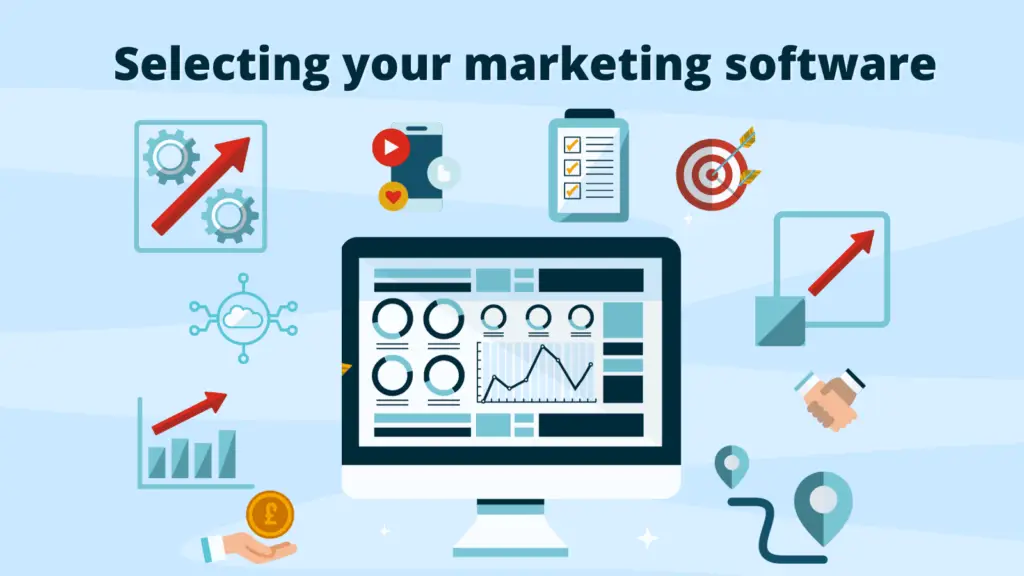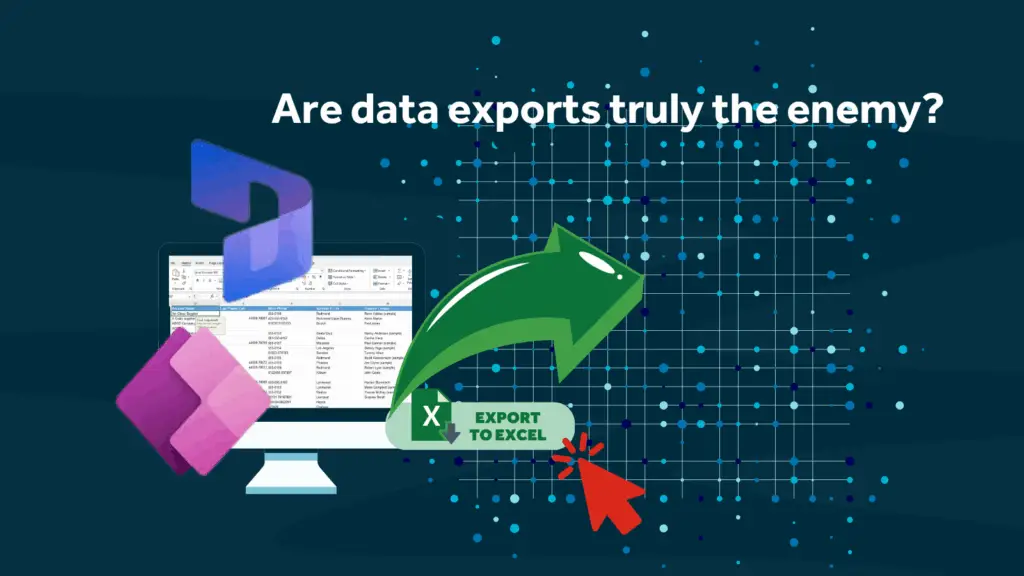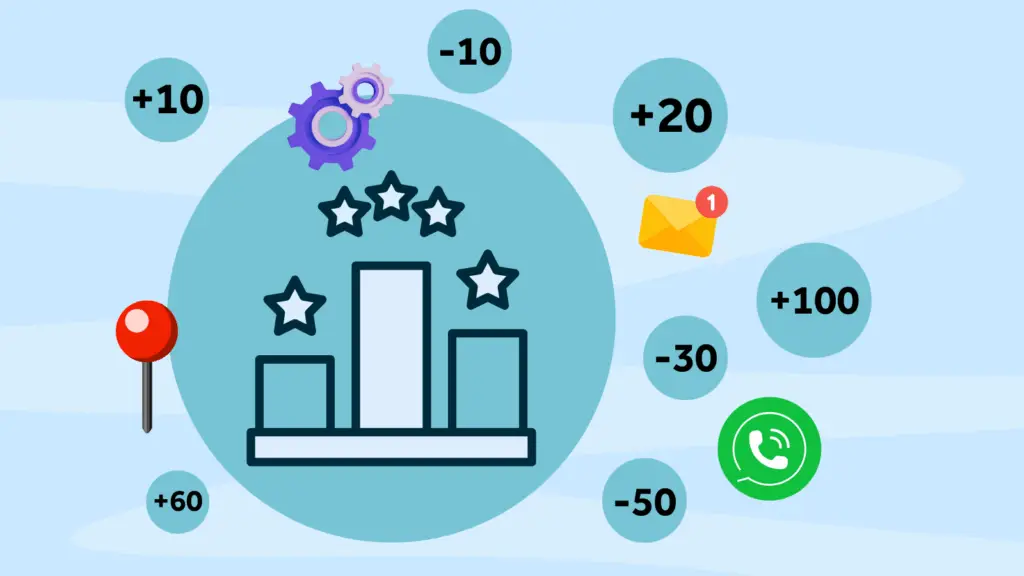Preparing to introduce a new marketing platform can be an exciting time for SMB marketers. Finally, you can begin to ramp up marketing productivity and activate your long-awaited plans. But don’t rush into grabbing the first platform you stumble across on the internet, as you need to be sure you get everything you need and a platform that doesn’t need a PhD to use. After all, software is meant to make your life easier, not harder.
We work with hundreds of SMBs and charity CRMs, so we know a thing or two about marketing software and what you need to transform how you communicate with your audiences.
If you’re currently on the hunt for a marketing platform to pair with your CRM, here are the top 10 things we recommend you consider:
1) Integration with your CRM
It is possible to run CRM and a Marketing Platform and keep them separate; in fact, for organisations that run legacy systems that don’t support integration, that may be their only option. Unfortunately, that situation does not take advantage of everything either system offers, as keeping your sales and marketing platforms separate undermines the efficiency and data consolidation that CRM and marketing automation platforms can provide when integrated.
A company called Nucleus Research found that while 60% of companies had invested in some sort of CRM integration, less than a third of those companies had extended that integration to other systems. The CRM Integration Challenge (nucleusresearch.com)
And while there is an added cost with achieving extended integration, companies that successfully integrate CRMs to other systems can see a 20 to 30 per cent growth in business.
Having separate silos for marketing and sales data means that customer profiles may be incomplete, and analytical insights may not show the entire picture. On the other hand, an integrated system that syncs data from the sales and marketing teams allows for a more comprehensive picture of who customers are, where they are, and what speaks to their interests.
There’s also the risk that separate marketing and sales systems may take different approaches to customer outreach, resulting in disjointed messaging that changes at different parts of the sales process. Integrated systems allow for consistent messaging across the whole customer journey, creating a more seamless experience for leads as they’re converted into customers. This means relationships that are established via marketing tools can be more easily transferred to sales via the CRM.
Moreover, gaining a complete view of the lead or customer is critical to successfully building relationships and nurturing opportunities.
Marketing automation is a business’ first step in building a relationship with a lead. Having access to marketing data helps sales reps see the full picture of a lead’s history from day one, enabling them to hit the ground running with personalised messaging and outreach. This can also eliminate some of the information that new customers need to provide the sales team, making the transition smoother for the customer and simpler for team members.
Understand What’s Working
Just as marketing can inform sales, sales information can inform marketing efforts. Integration between the two systems makes it easier to run closed-loop reporting to see the whole picture and know what’s working and what isn’t within the sales process. These more comprehensive insights gathered from sales information give your marketing team an idea of what’s converting to sales and what’s not. This goes a long way towards improving ROI calculations for different marketing campaigns and setting appropriate goals.
If a business wants its sales and marketing teams to be as effective as possible, then it is best to consider investing in CRM and marketing automation integration.
2) Ability to have a Marketing Calendar Planning
A marketing calendar is a strategic tool used by businesses and marketing teams to plan, organise, and manage their marketing activities and campaigns over a specified period, typically a month, quarter, or year. It serves as a visual roadmap that outlines key milestones, initiatives, and promotional efforts, helping marketers align their efforts with business goals and ensure consistent messaging across different channels.
A well-structured marketing calendar includes details such as campaign launch dates, content creation schedules, social media posts, email marketing campaigns, advertising campaigns, and any other relevant activities. This structure and planning are fundamental to efficient and effective marketing operations.
Integrating a marketing calendar into a digital marketing platform offers many benefits for businesses aiming to enhance their online presence and engagement.
Firstly, it facilitates collaboration and communication within the marketing team so that all members clearly understand their roles and responsibilities and what’s coming up.
Secondly, a digital marketing platform with an embedded calendar feature facilitates efficient time management. Marketers can schedule and automate various tasks, ensuring that content and campaigns are released at optimal times to reach the target audience.
Integrating a marketing calendar into a digital marketing platform streamlines operations, enhances strategic planning and contributes to a more successful and impactful marketing strategy.
3) Scalability
A scalable marketing platform is essential for businesses to efficiently manage their marketing efforts as they grow and adapt to changing market dynamics. Scalability in this context refers to the platform’s ability to handle increasing demands, workloads, and complexities without compromising its performance or user experience. Imagine a business that starts with a limited customer base but gradually expands to target larger audiences across multiple channels.
Without a scalable marketing platform, the organisation would struggle to manage the increasing volume of data, campaigns, and interactions, leading to inefficiencies, data errors, and missed opportunities.
To grasp the importance of scalability without diving into technical intricacies, consider a real-world analogy: a highway system.
Think of a marketing platform as a highway that connects a business to its customers. Initially, the traffic might be light, representing a small customer base and simple campaigns. However, as the business gains traction, the traffic increases, with more campaigns, data points, and customer interactions entering the mix. If the highway (platform) isn’t designed to accommodate this growth, congestion occurs—campaigns get stuck, customer data gets lost, and the overall marketing process becomes sluggish and error-prone. A scalable marketing platform serves as an expanded highway with additional lanes and robust infrastructure, ensuring the increasing marketing “traffic” flows smoothly and efficiently.
A scalable marketing platform simplifies complexity by providing a framework that can flexibly adapt to a company’s evolving needs.
This adaptability ensures that businesses can seamlessly integrate new marketing channels, technologies, and strategies as they emerge without facing the daunting prospect of reengineering their entire marketing infrastructure.
Just as a city’s transportation system needs to handle more commuters without causing gridlock, a scalable marketing platform empowers businesses to navigate the ever-changing landscape of customer engagement, data analysis, and campaign management without getting lost in the maze of intricacies.
4) A Customer journey builder that is easy to use
A campaign automation tool is like a helpful conductor orchestrating a symphony of marketing activities. It’s a user-friendly feature within platforms like Click or Dynamics 365 Marketing that streamlines your marketing efforts. Imagine you’re planning a series of steps to engage with potential customers – sending emails, posting on social media, and following up with personalised messages.
Instead of doing each step manually, the campaign automation tool lets you set up a sequence of actions in advance. It is like creating a roadmap for your marketing journey. Once started, the tool automatically guides customers through this journey, sending the right messages at the right times and even adapting based on their responses.
Think of the customer journey builder as a visual map that guides your customers from first contact to becoming loyal fans. In platforms such as Click or Dynamics 365 Marketing, this tool helps you design these journeys without needing complex coding skills. You start by dragging and dropping elements – like emails, events, or surveys – onto a canvas. Then, you connect these elements to create a path that mirrors how you want customers to interact with your brand. As your customers engage – opening emails, registering for events, or making purchases – the tool tracks their progress and can automatically trigger the next step. This way, you ensure a consistent and personalised experience.
Ultimately, these tools in marketing platforms make your job easier by taking care of repetitive tasks and letting you focus on the bigger picture. They empower you to create and manage complex marketing campaigns or customer journeys with simplicity, ensuring that every interaction with your audience feels cohesive and tailored without requiring you to be a technical expert.
5) Proper support
Having reliable technical support and expert guidance when using a marketing platform is like having a skilled navigator on a journey. Whether you’re exploring new territories with platforms like Click or Dynamics 365 Marketing, having a partner who knows the ins and outs of these tools is essential. A knowledgeable partner not only provides solutions when you encounter challenges but also offers training to help you navigate smoothly and make the most of the platform’s features.
Think of technical support as your safety net during your marketing endeavours. When you’re using platforms to manage campaigns, track customer interactions, or analyse data, technical glitches or roadblocks can appear unexpectedly. Having a dependable partner who understands the platform can be your beacon in such situations. They can troubleshoot issues, offer quick solutions, and guide you through the process. With their expertise, you can overcome challenges and keep your marketing efforts on track, avoiding unnecessary frustrations and delays.
Additionally, having access to expert advice and consultancy helps you chart a course for success. As a partner familiar with the marketing platform can offer strategic insights tailored to your business. They can help you align your marketing strategies with the platform’s capabilities, ensuring you maximise its features. This guidance can be invaluable, helping you avoid pitfalls and optimise your marketing campaigns effectively.
6) Social Media Automation
Social media automation plays a pivotal role in modern marketing platforms, offering several compelling benefits for businesses looking to streamline their online presence and engagement. Firstly, automation enhances consistency and saves time. With a marketing platform that supports social media automation, companies can schedule posts, updates, and interactions in advance. This ensures a steady and consistent flow of content across various platforms, maintaining brand visibility without needing constant manual intervention. Like setting up a well-timed sprinkler system for a garden, social media automation nurtures your online presence, allowing you to focus on other important tasks while maintaining an active digital footprint.
Secondly, automation empowers businesses to engage with their audience effectively. A robust marketing platform can analyse user behaviours and interactions, allowing businesses to tailor their content and timing for maximum impact. Imagine a responsive chef who creates dishes based on diners’ preferences and schedules – similarly, social media automation adapts your content strategy to match your audience’s interests and online habits. This personalised approach boosts engagement, as your posts are more likely to resonate with your audience when they are delivered at the right moment and in the right context.
Lastly, automation facilitates data-driven decision-making. Marketing platforms equipped with social media automation often provide valuable insights into the performance of your campaigns. These insights can include metrics like engagement, click-through, and conversion rates. Armed with this data, businesses can refine their strategies, allocate resources effectively, and optimise their social media campaigns for better results. This data-driven approach ensures that every move is backed by evidence, leading to smarter and more successful marketing.
7) Reporting and Analytics
The ability to generate comprehensive and insightful reports from a marketing platform is crucial for several reasons. Firstly, reporting provides a clear view of your marketing performance. Just as a compass helps sailors navigate by showing their direction, reports guide businesses by revealing the effectiveness of their marketing strategies. Through data on key metrics such as conversion rates, engagement levels, and ROI, companies can assess which campaigns are successful and which need refinement. This knowledge empowers informed decision-making, allowing companies to allocate resources strategically and optimise their marketing efforts for maximum impact.
Secondly, reporting enables accountability and transparency, ensuring that all stakeholders know the results and can contribute ideas for improvement. This fosters a culture of collaboration and continuous growth as teams work together to capitalise on successes and address challenges.
Lastly, reporting drives continuous improvement. Analysing marketing reports enables businesses to refine their strategies over time, as by identifying trends, patterns, and areas of opportunity, companies can adjust their approach, experiment with new ideas, and iterate on what works best. This iterative process leads to more effective marketing campaigns, better customer engagement, and improved business outcomes.
8) Good segmentation tools
In marketing database terms, segmentation refers to the practice of dividing a larger group of customers or prospects into smaller, more targeted subgroups based on shared characteristics, behaviours, or preferences. Imagine you have a basket of different fruits – segmentation is like sorting them into groups of apples, oranges, and bananas. By grouping similar individuals together, marketers can create more tailored and relevant marketing strategies that resonate with each specific segment.
Segmentation is essential for effective marketing for a few key reasons. Firstly, it boosts personalisation. This personal touch enhances customer engagement, as individuals are more likely to respond positively to relevant messages.
Secondly, segmentation improves efficiency. Instead of using a one-size-fits-all approach and sending the same message to everyone, marketers can save time and resources by targeting their efforts where they’re most likely to yield results. It’s like a fisherman using the right bait for different types of fish – segmentation ensures that your marketing efforts are focused on the right audience, increasing the chances of conversion and ROI.
Lastly, segmentation enhances insights and analysis. Just as a detective studies different clues to solve a case, marketers can analyse the behaviour and preferences of different segments to gain deeper insights into what drives their actions. This understanding helps refine marketing strategies over time, making them more effective and impactful.
In a nutshell, segmentation in marketing databases is about dividing your audience into smaller, meaningful groups for better personalisation, efficiency, and insights, leading to more successful marketing campaigns.
9) A/B testing
A/B testing in marketing emails compares two variations of an email campaign to determine which one performs better in achieving specific goals, such as higher open rates, click-through rates, or conversions. It’s like conducting a controlled experiment to see which version of the email resonates more with your audience. The “A” version is the original or control email, while the “B” version is slightly altered, often with a single variable change, like the subject line, content, or call-to-action.
The purpose of A/B testing is to make informed decisions based on real data rather than relying on assumptions or guesswork. Imagine a chef testing two recipes for the same dish – they want to know which produces the tastier result. Similarly, in A/B testing, you want to identify which email variation generates better engagement or conversions. By sending both versions to a subset of your audience and analysing the performance metrics, you can determine which elements of your email campaign are more effective.
A/B testing helps marketers fine-tune their email campaigns, learning from the preferences and behaviours of their audience. This iterative approach leads to more optimised and successful email campaigns over time, ensuring that your communications are as effective as possible in achieving your marketing goals.
10) Return on your investment
How do you know if you’re getting a return on your investment?
Well, there are some things you can do, which we’ll list in a minute, but to be honest, we think that many smaller organisations don’t treat it so scientifically and just go on a gut feeling. And this is where things can go wrong.
Determining the potential return on investment (ROI) from a marketing platform involves a thoughtful approach considering various factors.
Here are some steps you should take if you want to make a plan to assess your ROI:
-
- Set Clear Objectives: Define your marketing goals and what you aim to achieve with the platform. Whether it’s increased sales, brand awareness, lead generation, or customer engagement, having clear objectives will provide a foundation for measuring success.
-
- Calculate Costs: Understand the costs associated with the marketing platform, including subscription fees, setup expenses, and any additional resources required, such as staff training or external consulting.
-
- Estimate Potential Benefits: Consider how the platform can positively impact your marketing efforts. Will it help you reach a larger audience? Improve customer targeting? Automate repetitive tasks? Quantify the potential benefits in terms of increased revenue, cost savings, or improved efficiency.
-
- Track Key Metrics: Identify the key performance indicators (KPIs) that align with your objectives. These could include metrics like conversion rates, click-through rates, engagement levels, and customer acquisition costs. Ensure that the marketing platform provides the tools to track these metrics effectively.
-
- Benchmark Current Performance: Compare the performance of your current marketing efforts with the expected outcomes from using the platform. This baseline assessment will help you measure the platform’s impact accurately.
-
- Monitor and Analyse Results: Once you’re using the platform, closely monitor the performance of your campaigns. Collect data on the selected KPIs and analyse the results. Compare these results with your initial benchmarks to gauge the platform’s impact.
-
- Calculate ROI: Use the data collected to calculate your ROI. The basic formula is: (Net Profit – Cost of Investment) / Cost of Investment. If the result is greater than 1, you’re generating a positive return.
-
- Consider Intangibles: In addition to tangible results, consider intangible benefits such as improved brand reputation, enhanced customer experiences, and long-term customer loyalty. While these may not be directly quantifiable, they can contribute significantly to overall business growth.
-
- Iterate and Optimise: Continuously refine your campaigns based on insights gained from the platform’s analytics. Use A/B testing and data-driven decision-making to identify strategies that yield the best results.
- Remember that ROI assessment is an ongoing process. It’s important to set realistic expectations, track progress consistently, and adjust your strategies as needed. A marketing platform can provide valuable tools, but your strategy, content, and execution also play a significant role in achieving a positive return on your investment.
So that’s our top 10 things to look for in a Marketing Platform. By considering each of these aspects, you’ll be more likely to select a marketing platform that truly delivers growth and productivity for your organisation.
Absorb this topic in audio form by listening to our podcast episode 10 Things to look for in a marketing CRM.
If you want to find out more about which marketing platform we might recommend with your Dynamics 365 CRM system, reach out.
Subscribe to our newsletter, e-BLAST, to stay in the know on all CRM-related matters.
ABOUT ROCKET CRM
Rocket CRM is a Microsoft Dynamics 365, and a platinum Click accredited partner, helping small to medium-sized businesses and charities harness the power of scalable CRM technology. Our mission is to make powerful CRM software simple with custom-built, user-focused solutions.
Website: rocketcrm.co.uk
Podcast: RocketPod
Twitter: rocketcrmuk




